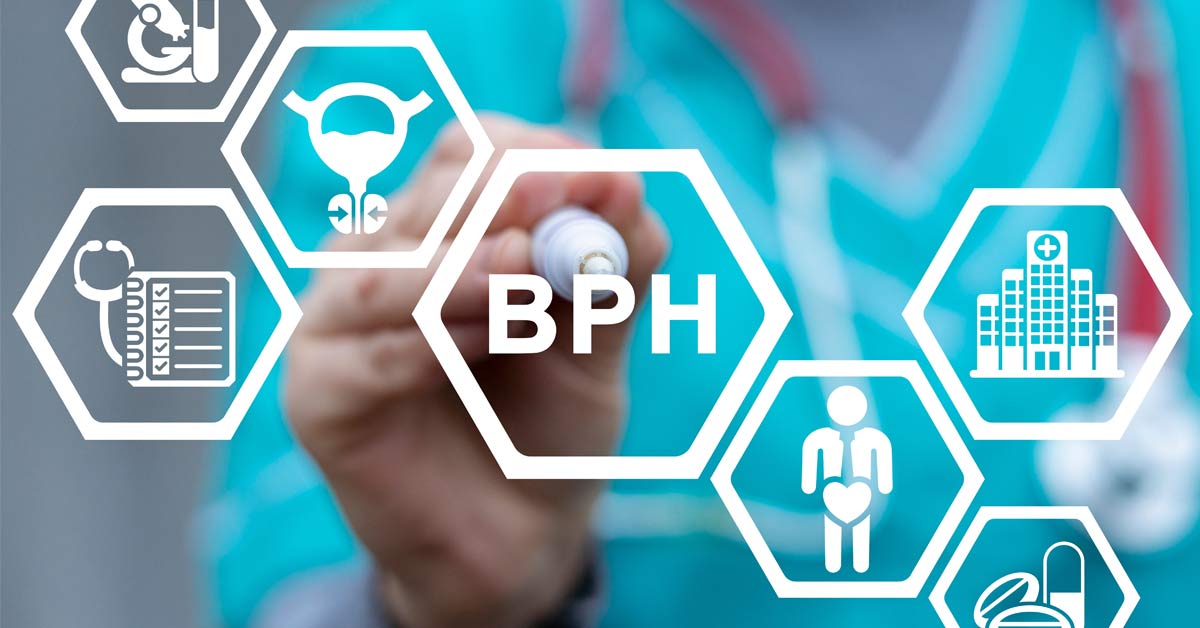Benign prostatic hyperplasia (BPH), also known as an enlarged prostate, is one of the most common conditions men experience as they age. BPH isn’t life-threatening, but its symptoms can be frustrating and even lead to complications if ignored. Here are 5 things you should know about benign prostatic hyperplasia.
5 Things You Should Know About Benign Prostatic Hyperplasia
1. BPH Is Not Prostate Cancer
One of the biggest worries men have when they hear their prostate is enlarged is cancer. In medical terms, the word benign is used to indicate that the growth is not due to cancer. BPH does not spread to other parts of the body, and it does not automatically increase your risk of developing cancer in the future.
However, the symptoms of BPH and prostate cancer can overlap, which is why medical evaluation is so critical. Your doctor can use tests like a prostate exam, urine studies, or a PSA blood test to separate BPH from other conditions.
2. The Prostate’s Location Explains the Symptoms
The prostate is a small gland that sits just below the bladder. It wraps around the urethra, the tube that carries urine from the bladder out of the body. As the prostate gets bigger, it presses against the urethra, narrowing the pathway for urine flow. This explains why urinary symptoms are prominent, including:
- Difficulty starting urination
- A weak or interrupted stream
- Dribbling at the end of urination
- Feeling like the bladder isn’t completely empty
- Waking up multiple times at night to urinate (nocturia)
Along with being inconvenient, these symptoms can affect sleep, work, routines, and activities.
3. Age Is the Biggest Risk Factor
While BPH can develop in younger men, it is strongly tied to aging. Hormonal shifts, particularly changes in testosterone and related hormones, are believed to drive the growth of the prostate. About half of men over 50 have some degree of BPH. By age 80, up to 90% of men experience symptoms.
Still, every man experiences it differently. Some men have significant symptoms at a relatively young age, while others may not notice changes until much later.
4. Many Treatments Are Available
Men often put off talking about urinary problems, but they don’t have to manage uncomfortable symptoms alone. A wide range of treatment options exist, and many are simple or non-invasive.
- Lifestyle changes like reducing caffeine and alcohol, limiting fluids at night, and regular exercise can ease symptoms for mild cases.
- Medications are available to relax prostate and bladder muscles for easier urination. Others shrink the prostate over time.
- Minimally invasive procedures, such as UroLift or GreenLight PVP, can relieve blockage with shorter recovery times.
- Surgical options are also available for men with severe symptoms
5. Talking to a Urologist Makes a Difference
Ignoring urinary symptoms is never a good idea. While BPH itself isn’t cancer, untreated symptoms can lead to:
- Bladder infections
- Bladder stones
- Kidney damage
Seeing a urologist helps rule out serious conditions, and going early means more treatment options are available. An evaluation usually includes:
- A physical exam, including a digital rectal exam (DRE)
- A urine test to check for infection or blood
- Sometimes, a PSA blood test is used to rule out prostate cancer
- Imaging or other specialized studies if symptoms are severe or other test results indicate a need
Schedule an Appointment with a Urologist
If these 5 things you should know about benign prostatic hyperplasia are resonating with you, it’s time to see a urologist. Mild cases may only need lifestyle changes, while more advanced cases can be treated before they cause complications. You don’t have to struggle with symptoms. BPH is common, manageable, and not cancerous.
Expert evaluations for BPH are available in the Chicago suburbs of Lake Barrington, Elgin, and Hoffman Estates.
Don’t continue to live with BPH symptoms – schedule an appointment today!

